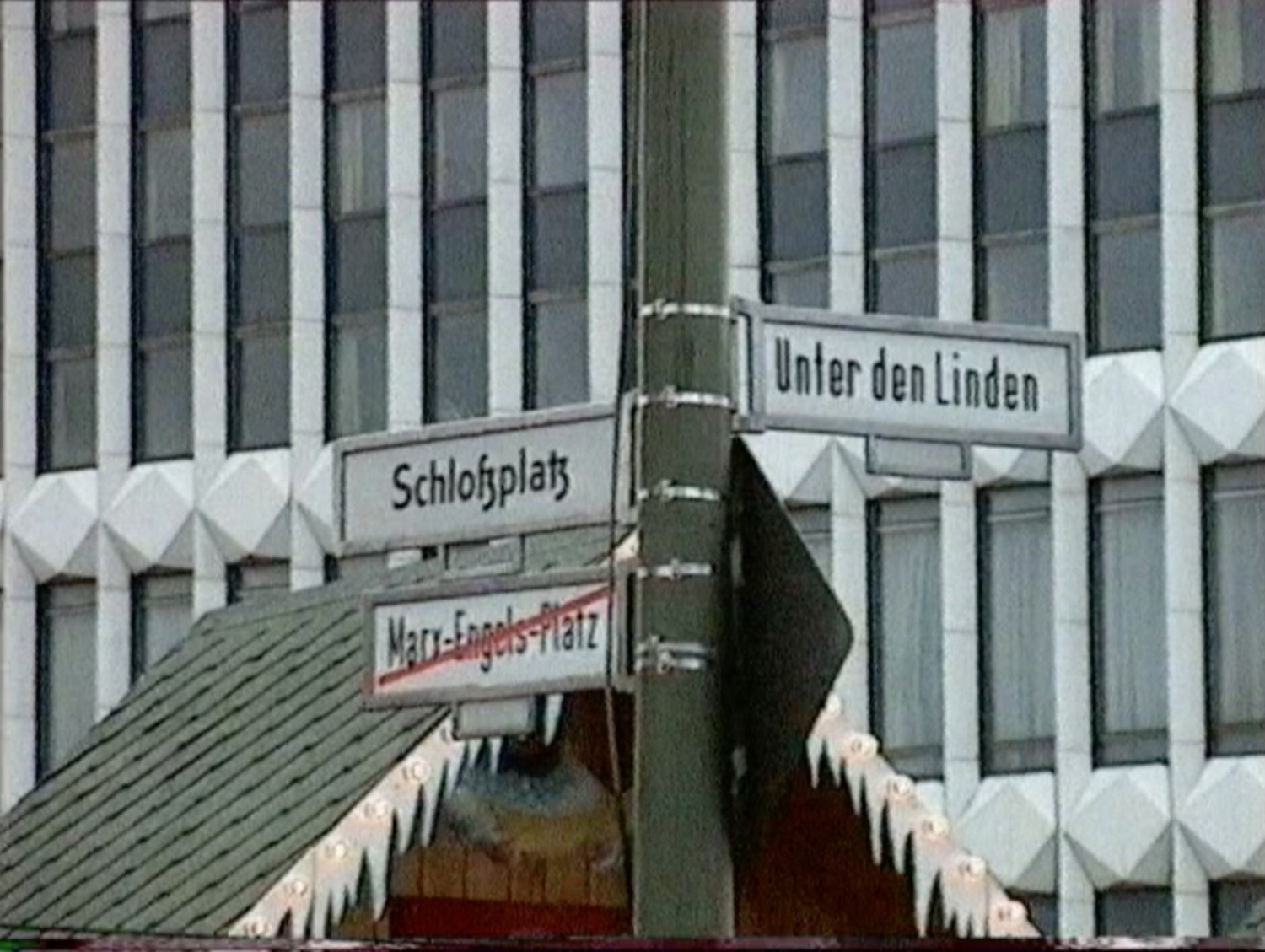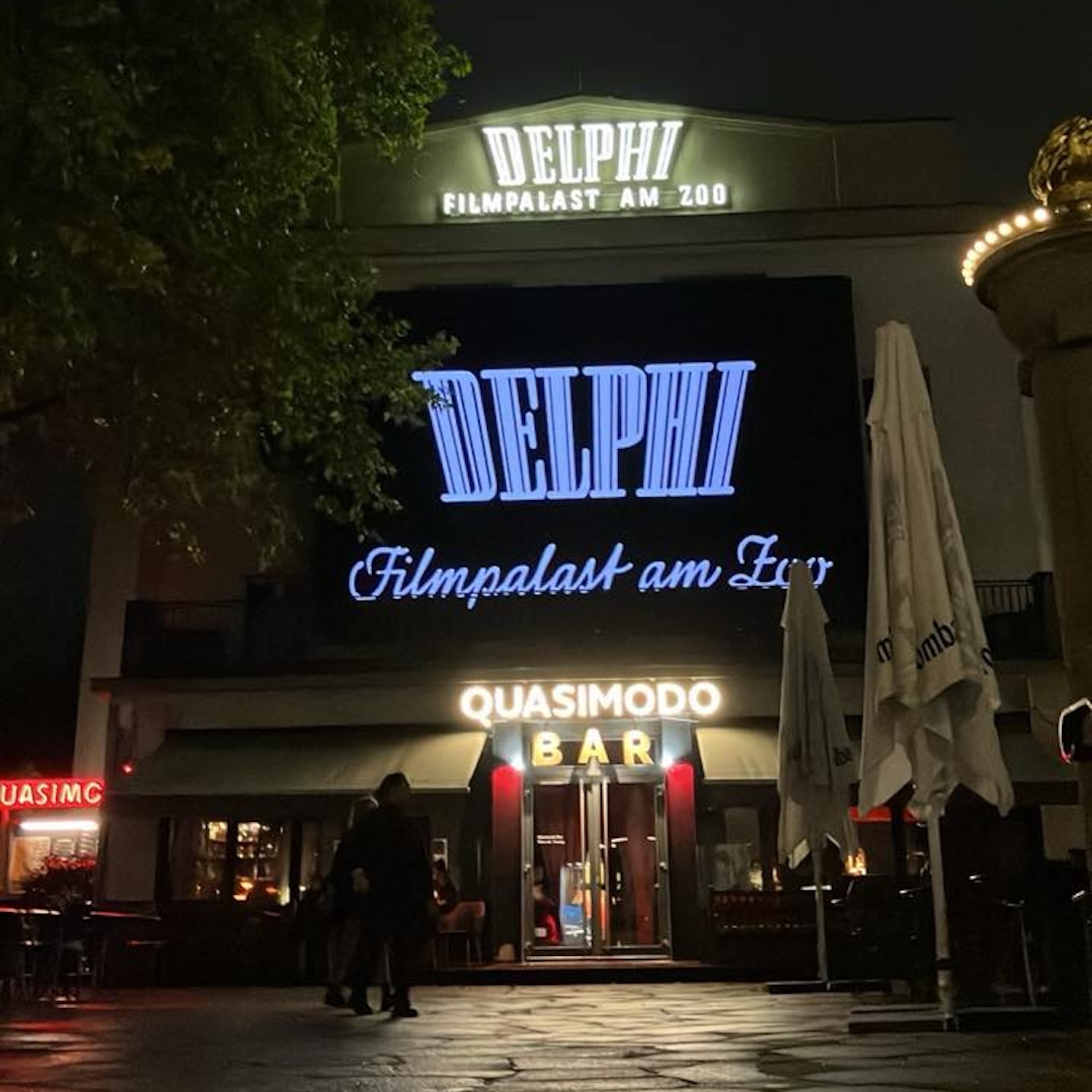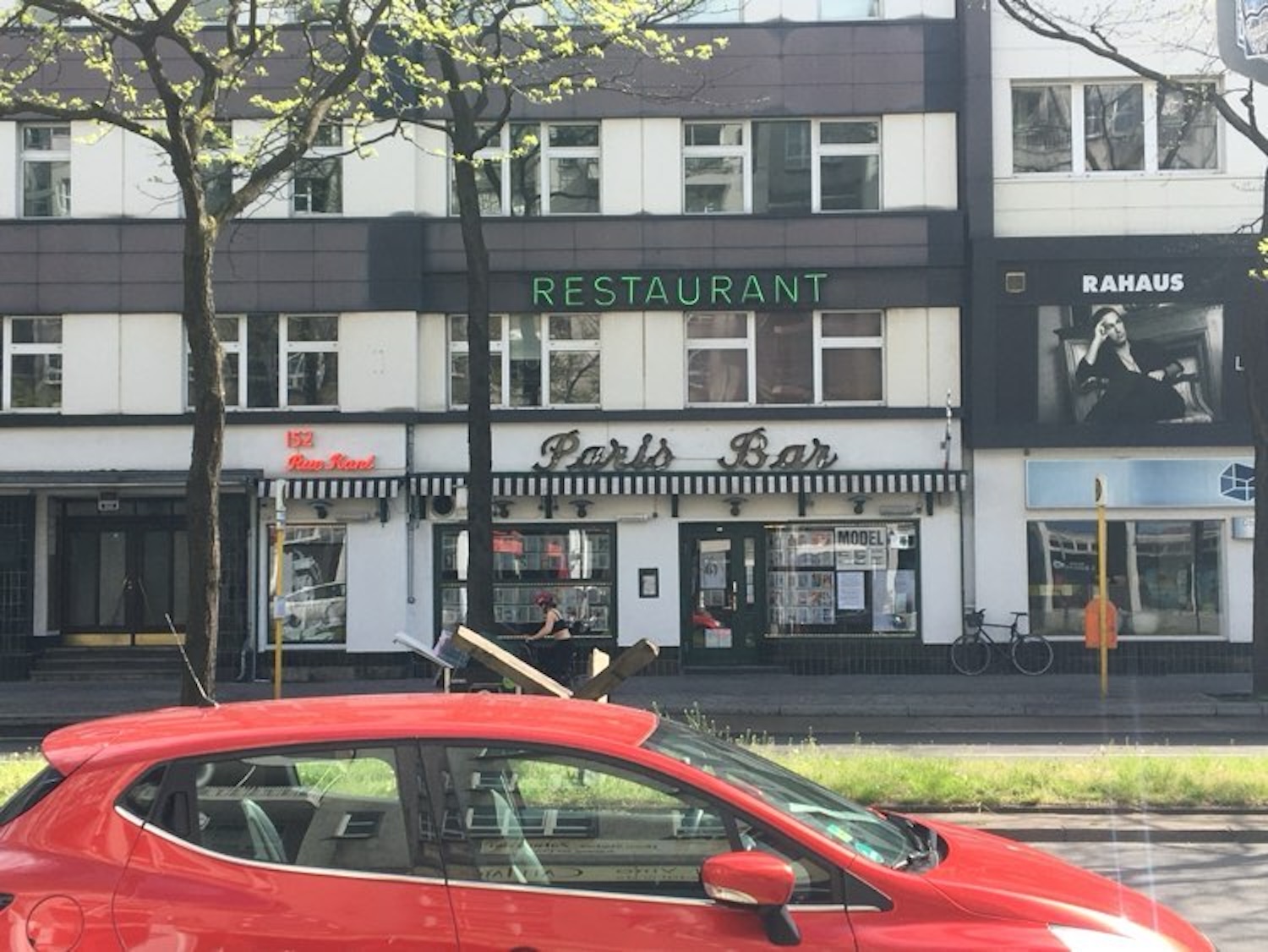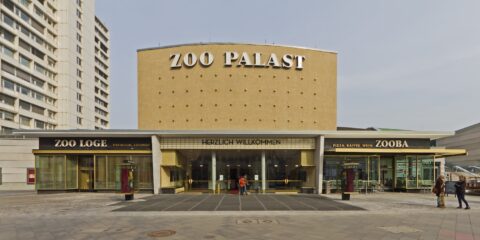The films have been finalised and the programme is out. Film critics have already watched tens of films, made reviews, put them in their scheduler. Interviews have been arranged. Despite political controversies, boycotts and a general sense that the quality of films has declined in recent years, many people are still excited to attend the Berlinale — the biggest festival in Germany, and one of the top three film festivals in Europe alongside Cannes and Venice.
But no one, and I really mean no one, is excited to hang around Potsdamer Platz.

The Cursed Square
Potsdamer Platz is entirely lacking in joy. A tribute to capitalism at its finest. A place with almost no authentic Berlin culture. And almost no residents! It may have many venues in which to show films — introducing this year, Stage BLUEMAX Theater, which as the name suggests, normally lays host to Blue Man Group productions — but it has almost no genuine places — bars, restaurants, cafés — to actually enjoy yourself between screenings. It is, quite simply, a vibe crisis.
In the 1998 film The Empty Centre (Hito Steyerl), which played in Berlin three years ago as a special Forum screening, we see how this empty land was radically transformed by capitalist interests into a place for the protection of capital instead of a place for the people. Laid empty until the end of the Cold War, a literal no-mans land with nothing in between, it was bought up by Sony, ABB and Daimler-Benz, who transformed the centre into a glossy 19-building city-within-a-city. But instead of linking East and West, it just replaced geopolitical tension with the frictionless, smooth face of international capital.
And that’s the problem. Potsdamer Platz does not represent Berlin or Germany to the world. It looks like absolutely anywhere. It could be the regenerated docklands off East London, it could be a planned town on the outskirts of Paris or it could be literally anywhere in Kuwait, Dubai or Riyadh. The overall feeling represented by Potsdamer Platz is anonymity and sadness.
Even the not-awful places are tinged with bad vibes. The Playce has a lot of food options, but the card-only system is, especially for a city that runs on cash, tragic. And the cafés lean equally heavily on card-only transactions with overpriced, bitter coffee. As for drinks, you can go to Posh Bar — but it’s tiny and expensive, hardly the buzzing centre of an entire film festival scene.
The same story repeats itself over and over and over. Critics and filmmakers and producers stand outside Cinemaxx in the freezing cold, smoking cigarettes, floating the idea of a drink. But no one wants to pay too much at Posh Bar or sit in an anonymous chain café or take a bus to Mehringdamm, so the vibe simply ends there and then. And then people who only visit Berlin for the festival wonder why it’s so sad! It’s not. You were just in the worst place in the entire city, possibly the world.
Likewise, between screenings, I might have an hour or two free. But with nowhere nice to sit and no cosy or affordable bistros in the area, I simply sit on a bench and eat a supermarket sandwich.11. Funnily enough, I won’t even be able to go to the supermarket this year. Rewe in the mall is closed until the summer!

The funniest part is how over the past eleven years I’ve attended the Berlinale, Potsdamer Platz has actually gotten worse! There used to be an IMAX Cinema in the Sony Centre. There is literally nothing there right now. There used to be the lively Billy Wilder cocktail bar; now closed. And there used to be House of 100 Beers; now a Paulaner chain restaurant. Further afield at Anhalter Bahnhof was the esteemed Stadtklause, a proper German pub run by Kosovans, and characterised by a large portrait of Fassbinder on the wall. Guess what? Its closed.
Arsenal Kino, which also organises Forum and Forum Expanded, has already seen the light and is moving to silent green Kulturquartier in Wedding this year. The German Film and Television Academy is also expected to leave.
I think it is time for Berlinale to leave too. It’s time to move back to Charlottenburg.

Why Charlottenburg is Feasible
I am not an event planner (although I have worked as one) nor am I an expert on film festivals in general. But I do understand that there are three key things that you need for a film festival, all of which Charlottenburg, specifically the area around Zoologisicher Garten, has some form of. Cinemas, Hotels, Conference and Logistical Venues. Let’s go through them individually.
- Cinemas
Zoo Palast can easily be the flagship kino of the entire Berlinale, with its beautiful look and handpainted posters on the outside, as well as a large outside area for the red carpet. Just a stone’s throw away is the Delphi-Filmpalast, perfect for screenings on film. These are cinemas already used for the Berlinale, so getting a deal with them should be nice and simple. And for press screenings, Delphi Lux, boasting a James Turell-esque interior design, has seven easy-to-use smaller screens.
But the cinemas don’t stop there. Cinema Paris on Kurfürstendamm has a capacity of 425 seats and, as the name suggests, perhaps makes a nice spot for French-language screenings. Also on the same street, the luxury Astor Film Lounge, and further west, Kant Kino, Kiez Kino, Filmkunst 66 and Klick Kino. The capacity to host the festival is certainly there.
The only defence that the Potsdamer Platz-mafia might have is the Berlinale Palast itself. It’s huge, with a 1700-seat capacity. (Only Friedrichstadt-Palast has a bigger capacity, but its seats are tiny and hard and uncomfortable.) In comparison, Zoo Palast has just under 800 seats, halving the amount of people that could buy tickets for big screenings. But my hatred of Potsdamer Platz doesn’t negate compromise. You can keep the Palast for some screenings, just move the centre of the festival away from the most boring place on earth.
2. Hotels
Yes, Hotel du Rome, Hotel Adlon and Ritz-Carlton — probably the three most prestigious hotels in Berlin — are all near Potsdamer Platz. But it’s not as if the area around the Zoo is particularly shabby either. Prestigious film guests can live with the Waldorf exactly opposite Zoo Palast, while there are hundreds of hotel options all down Ku’Damm for all types of budgets. This isn’t a genuine problem.
3. Conference and Logistical Venues
People who attend the EFM love the Gropius Bau, which can accommodate up to 120 market stands across three floors. And it’s a mere five-minute walk away from Potsdamer Platz. That actually can’t be so easily replaced without an outcry from people who love it, so it makes sense to keep the European Film Market there. A 20-30 minute travel time from Gropius Bau to Zoo Palast is just an inconvenience that they will have to live with. I’ve lived with the inconvenience of travelling to Potsdamer Platz for many years.
As for logistical areas, it’s not unreasonable to think that one of the many grand hotels in Zoo, whether it’s the Waldorf or Hotel Bristol or Linder Hotel, can’t become a new hub for picking up passes, conducting interviews and for Berlinale admin to get stuff done.
None of this is impossible, because the Berlinale was literally hosted at the Zoo Palast until the year 2000. The move to Potsdamer Platz was obviously a political one that represents the ultimate sunk-cost fallacy: they cannot abandon Potsdamer Platz because there has been so much investment into the area already. Abandoning the area would be accepting defeat. Good. Sometimes you need to take a step back.
Now the final case for Charlottenburg:

Way, Way Better Bars and Restaurants
I’ve only been to Cannes once, but what the French festival has in abundance is a very simple concept: loads of nice cafés you can sit in and drink a beer directly opposite the Palais. If the Berlinale was to move to Charlottenburg, visitors to the Berlinale would be greeted by an even better variety of fun and exciting places that are not almost entirely owned by transnational corporate interests.
Let’s go through the standards. For some Parisian flair, there’s the iconic Paris Bar, a place haunted by David Bowie in its day and adorned with a variety of fun (sometimes crude) paintings. Down the street is the 24/7-on-weekends Schwarzes Cafe, which I don’t even like (the service is too slow), but is an institution nonetheless. There are cocktail and jazz bars in the form of Gainsbourg and The Hat. And there are chill watering holes like Bunny’s Bar and Wirtshaus Wuppke.
Then there is one of Berlin’s most weirdly underpromoted secrets. Kantstraße. At first glance it looks just like a long and boring street in the middle of Berlin, but it is in fact one of the best places in Europe to get Asian food. And I mean almost any Asian food. No nonsense plates of Korean mixed grills at Arirang. Taiwanese noodles with queues out the door at Lon Men’s Noodle House. Cantonese food open till three am at Aroma. Steamy bowls of Pho at Saigon Green. Indonesian chicken curry. Thai green curry. Japanese katsu curry. Ramen. Sushi. And more. So so much more. I actually have no idea why it isn’t given some kind of Asia-Town designation like Chinatown in London or Little Tokyo in Düsseldorf. It’s a cultural wonder. My favourite place in the city.
Imagine using all of these places to your advantage as a festival so even when the films are bad, or the politics are iffy, there’s at least somewhere moderately authentic and/or cool where you can have a decent drink or meal and not feel like you’re in a new-build, multi-use entertainment complex in the heart of the Midwest. Zoo is not perfect by any stretch of the imagination — sometimes the area around the Bahnhof can be ropey, there’s a lot of traffic through the main stretch, a lot of those Asian restaurants are owned by the same group and its old-world vibes aren’t cool in comparison to Kreuzberg or Neukölln — but at least it has the distinct advantage of being a real place with a genuine history as well as having the actual infrastructure to host a festival on the sscale of Berlinale.
Of course, Berlinale is not just about drinking and eating, but I guarantee you more people would want to come back to Berlinale if they knew that after the screenings are over, there’s somewhere to actually have good conversations about films instead of making do with mediocrity.
It’s certainly something I’ll be thinking about while sitting in Dunkin’ Donuts, wishing I had some Taiwanese noodles instead.
–
P.S. If there is any logistical or cultural reason why Charlottenburg doesn’t make sense, please write to [email protected]. We’ll be happy to publish your counterargument.
Redmond is the editor-in-chief of Journey Into Cinema.
